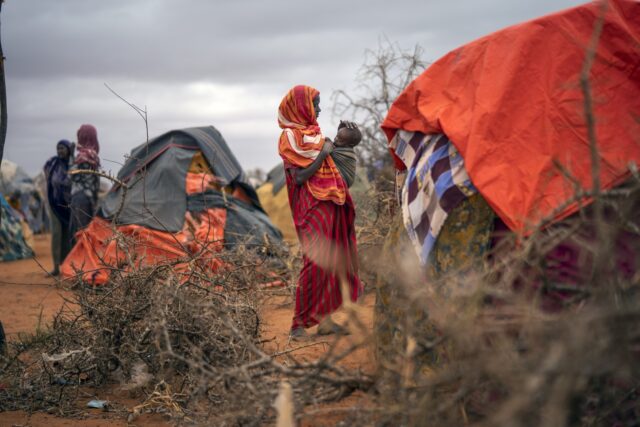A new United Nations report says acute malnutrition among pregnant and breastfeeding mothers has increased by 25% in the past two years in 12 countries hard hit by rising food prices fueled by the fighting in Ukraine
Malnutrition rises in pregnant women in 12 at-risk countriesBy EVELYNE MUSAMBIAssociated PressThe Associated PressNAIROBI, Kenya
NAIROBI, Kenya (AP) — Acute malnutrition among pregnant women and breastfeeding mothers has increased by 25% in the past two years in 12 countries hard hit by rising food prices fueled by the fighting in Ukraine, according to a new United Nations report.
Surveys in 10 countries in Africa and two in the Middle East that are worst affected by the food crisis were used in a UNICEF report, released Tuesday, a day before International Women’s Day.
Poor nutrition in pregnant and breastfeeding women can lead to weak immunity and complications during pregnancy and birth. Some countries in sub-Saharan Africa have in previous studies recorded high infant mortality rates due to various complications.
Globally, 51 million children under 2 years old are too short for their age due to malnutrition, a condition called stunting, and half of these become stunted during pregnancy or within their first six months of life, the report states.
“Without urgent action from the international community, the consequences could last for generations to come,” UNICEF Executive Director Catherine Russell said.
The affected girls and women have increased from 5.5 million in 2020 to 6.9 million in 2022 in Burkina Faso, Chad, Ethiopia, Kenya, Mali, Niger, Nigeria, Somalia, South Sudan, Sudan, Yemen and Afghanistan, according to the report.
UNICEF recommends increased nutrition assistance and supplying fortifications to highly consumed basic foods such as flour, cooking oil and salt to reduce micronutrient deficiencies.
Ensuring that pregnant and breastfeeding mothers have access to nutrition services and supplements has also been recommended in the report.
Some of the countries in sub-Saharan Africa have high rates of teenage pregnancies and low attendance at prenatal clinics.
Faith Kanini, 28, who lives in Kenya’s capital, Nairobi, told The Associated Press she cannot afford to attend the prenatal clinics although it is recommended.
“I pay cash for the few clinics I have attended. It is expensive for me and I cannot pay the NHIF (state health) insurance monthly premiums because I am unemployed and I rely on friends and family,” the first-time mother-to-be said in a phone interview.
Women in poor households are twice as likely to be underweight as those from the wealthiest households, according to the UNICEF report.
“South Asia and sub-Saharan African remain the epicenter of the nutrition crisis among adolescent girls and women, home to two in three adolescent girls and women suffering from underweight globally, and three in five adolescent girls and women with anemia,” the report adds.
___
This story has been corrected to name Niger as one of the countries listed.
___
Find more AP Health coverage at https://apnews.com/hub/health

COMMENTS
Please let us know if you're having issues with commenting.